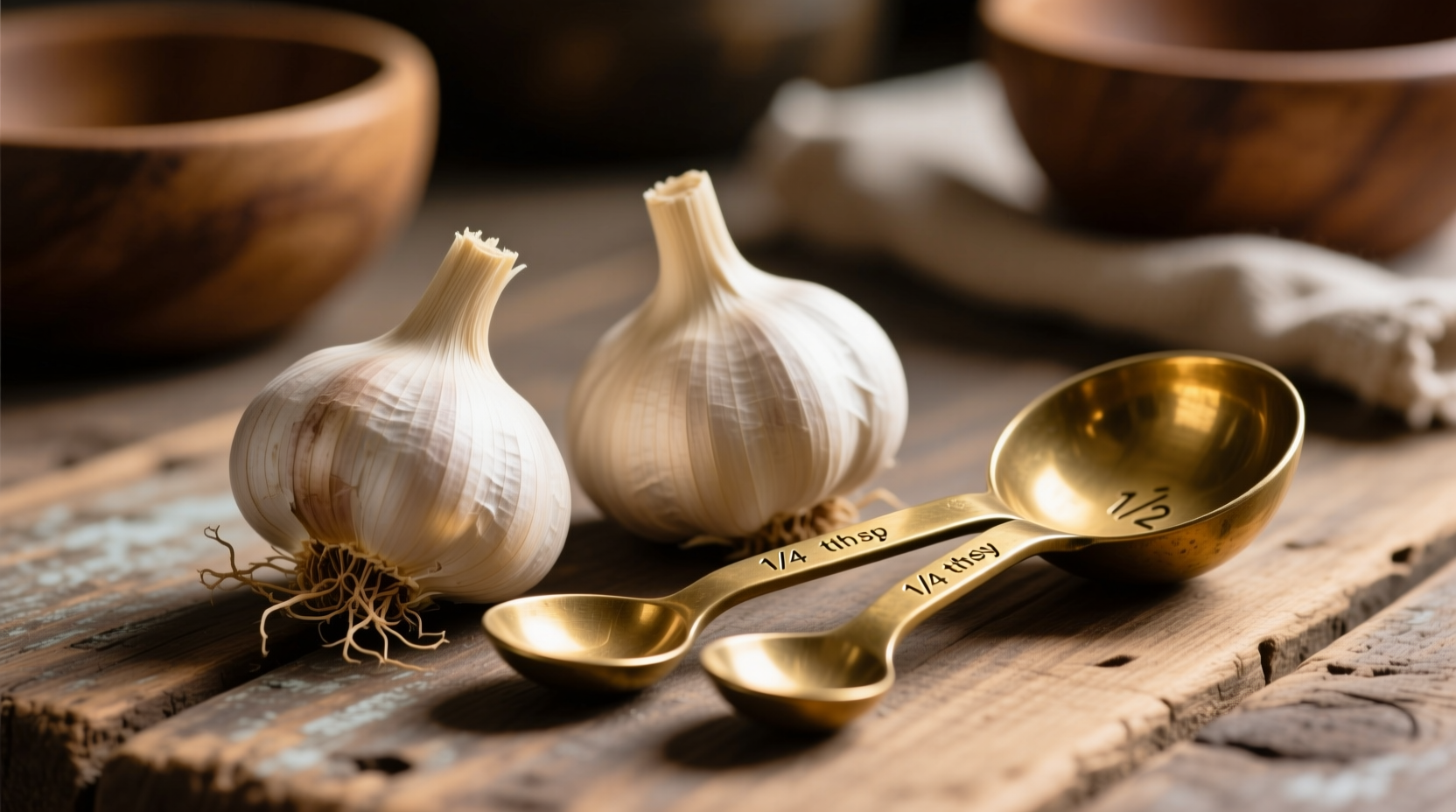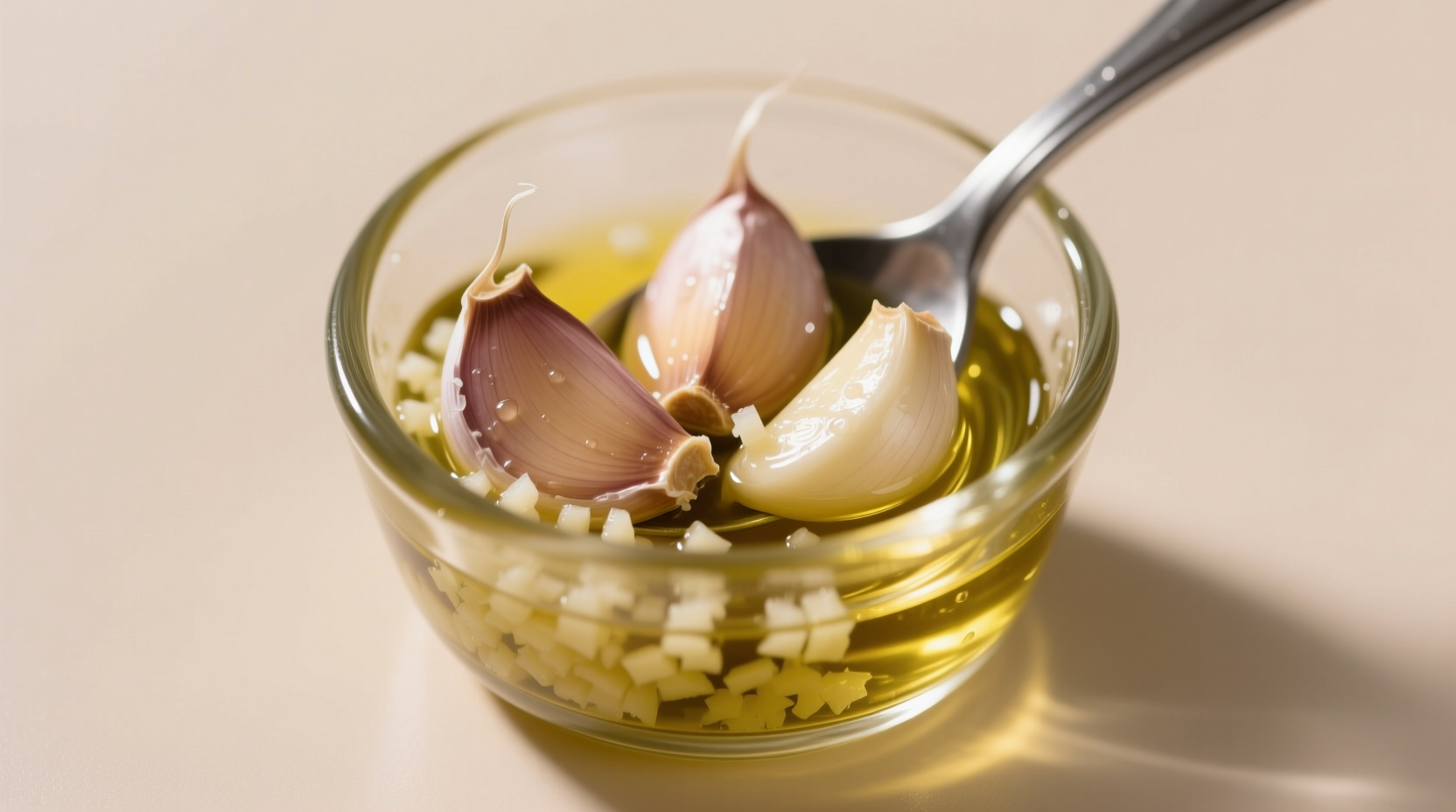Three medium garlic cloves equal approximately 1.5 tablespoons of minced garlic. This conversion is essential for recipe accuracy, as using too much or too little garlic can dramatically alter your dish's flavor profile.
Ever found yourself mid-recipe, staring at a clove of garlic while the instructions demand tablespoons? You're not alone. Converting garlic cloves to tablespoons is one of the most frequent kitchen measurement challenges home cooks face. Understanding this conversion ensures your dishes achieve the perfect garlic balance - whether you're making pasta sauce, roasted vegetables, or homemade aioli.
Why Garlic Measurement Matters
Garlic's potent flavor means precise measurement directly impacts your final dish. Too little leaves recipes lacking depth, while too much creates overpowering bitterness. Professional chefs emphasize that accurate garlic measurement ranks among the top five most common kitchen errors affecting recipe success.
| Garlic Quantity | Minced Volume | Crushed Volume |
|---|---|---|
| 1 small clove (0.5" diameter) | 1/2 tbsp | 1/3 tbsp |
| 1 medium clove (0.75" diameter) | 1/2 tbsp | 1/3 tbsp |
| 1 large clove (1" diameter) | 1 tbsp | 2/3 tbsp |
| 3 medium cloves | 1.5 tbsp | 1 tbsp |
Factors Affecting Garlic Conversion Accuracy
Several variables influence the precise conversion from cloves to tablespoons:
Clove Size Variability
Garlic cloves vary significantly in size depending on variety and growing conditions. According to USDA FoodData Central measurements, a single medium clove typically ranges from 4-7 grams. This size difference creates substantial volume variation when minced. For critical recipes, weighing cloves (3 medium cloves = 15-20g) provides more accuracy than counting.
Preparation Method Differences
Your technique dramatically affects volume:
- Minced: Fine chopping yields maximum volume (3 medium cloves = 1.5 tbsp)
- Crushed: Using a press compacts garlic (3 medium cloves = 1 tbsp)
- Sliced: Takes more space (3 medium cloves = 2 tbsp)

Practical Kitchen Applications
Understanding these conversions transforms your cooking experience. When following recipes:
For Sauce and Soup Recipes
Liquid-based dishes benefit from minced garlic's even distribution. For tomato sauces or soups requiring 3 cloves, use 1.5 tablespoons minced for consistent flavor throughout. America's Test Kitchen research shows this method prevents bitter garlic pockets that occur when whole cloves aren't fully incorporated.
For Roasted or Grilled Dishes
When roasting whole, keep cloves intact for milder flavor. Three medium cloves roasted in olive oil for 20 minutes creates a sweet, caramelized addition to vegetables or meats. The volume decreases during cooking, so don't substitute pre-minced garlic in these applications.
When Substitutions Become Necessary
Running out of fresh garlic? These alternatives work in a pinch:
- Garlic powder: 1/8 teaspoon per clove (3 cloves = 3/8 tsp)
- Bottled minced garlic: 1:1 ratio with fresh minced (check sodium content)
- Garlic paste: 1/2 teaspoon per clove (3 cloves = 1.5 tsp)
Remember that processed garlic products often contain preservatives that alter flavor. The University of California Cooperative Extension notes that fresh garlic provides superior flavor complexity compared to processed alternatives.
Professional Chef Tips for Garlic Success
Seasoned cooks employ these techniques for perfect garlic every time:
- Peel efficiently: Smash cloves with your knife flat for easy peeling
- Control potency: Remove the green sprout from older cloves to reduce bitterness
- Timing matters: Add minced garlic later in cooking to preserve flavor; whole cloves earlier for milder taste
Common Measurement Mistakes to Avoid
Based on culinary school teaching observations, these errors frequently occur:
- Confusing tablespoons with teaspoons (3 cloves ≠ 1.5 teaspoons!)
- Not accounting for different garlic varieties' sizes
- Using pre-minced garlic from jars without adjusting for liquid content
- Adding garlic too early, causing burning and bitterness











 浙公网安备
33010002000092号
浙公网安备
33010002000092号 浙B2-20120091-4
浙B2-20120091-4